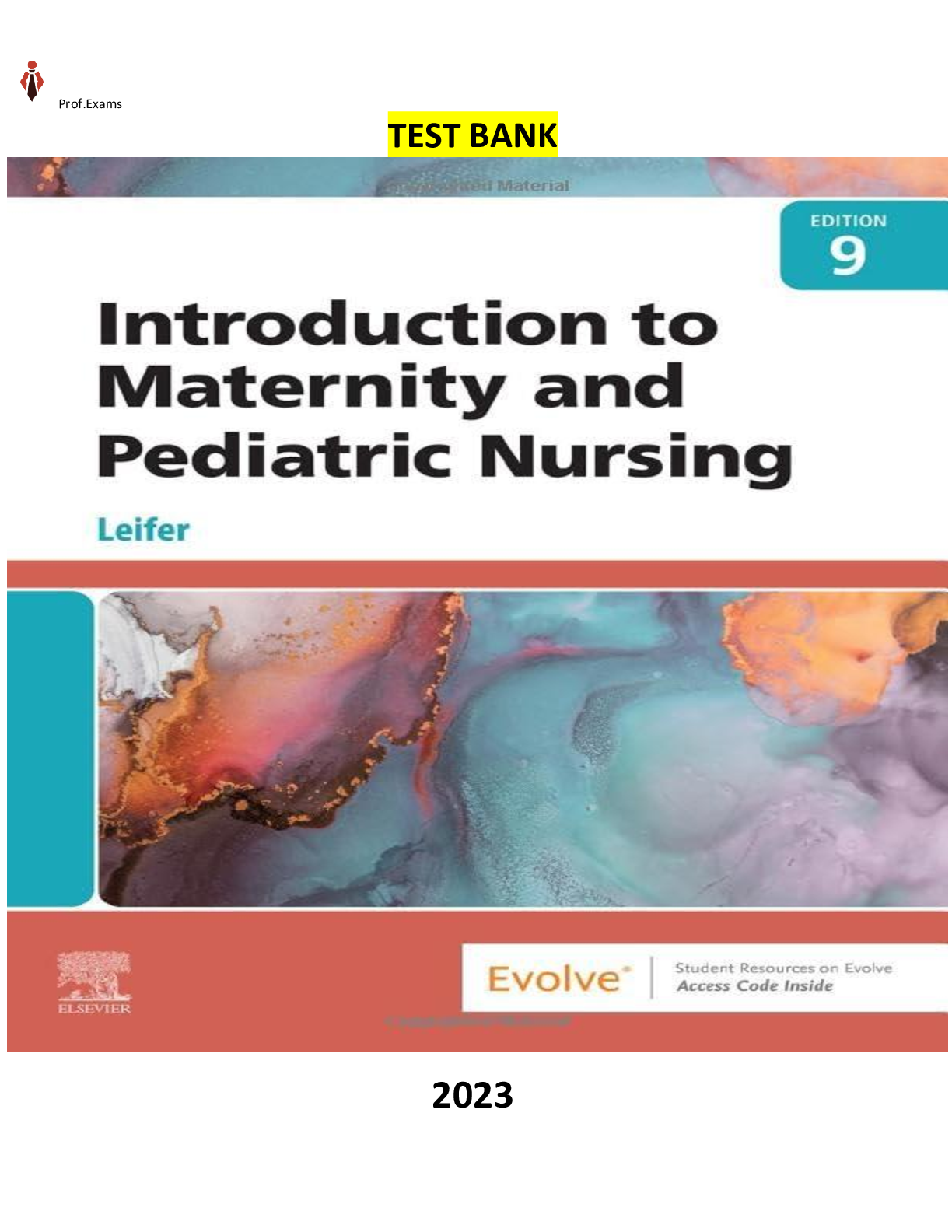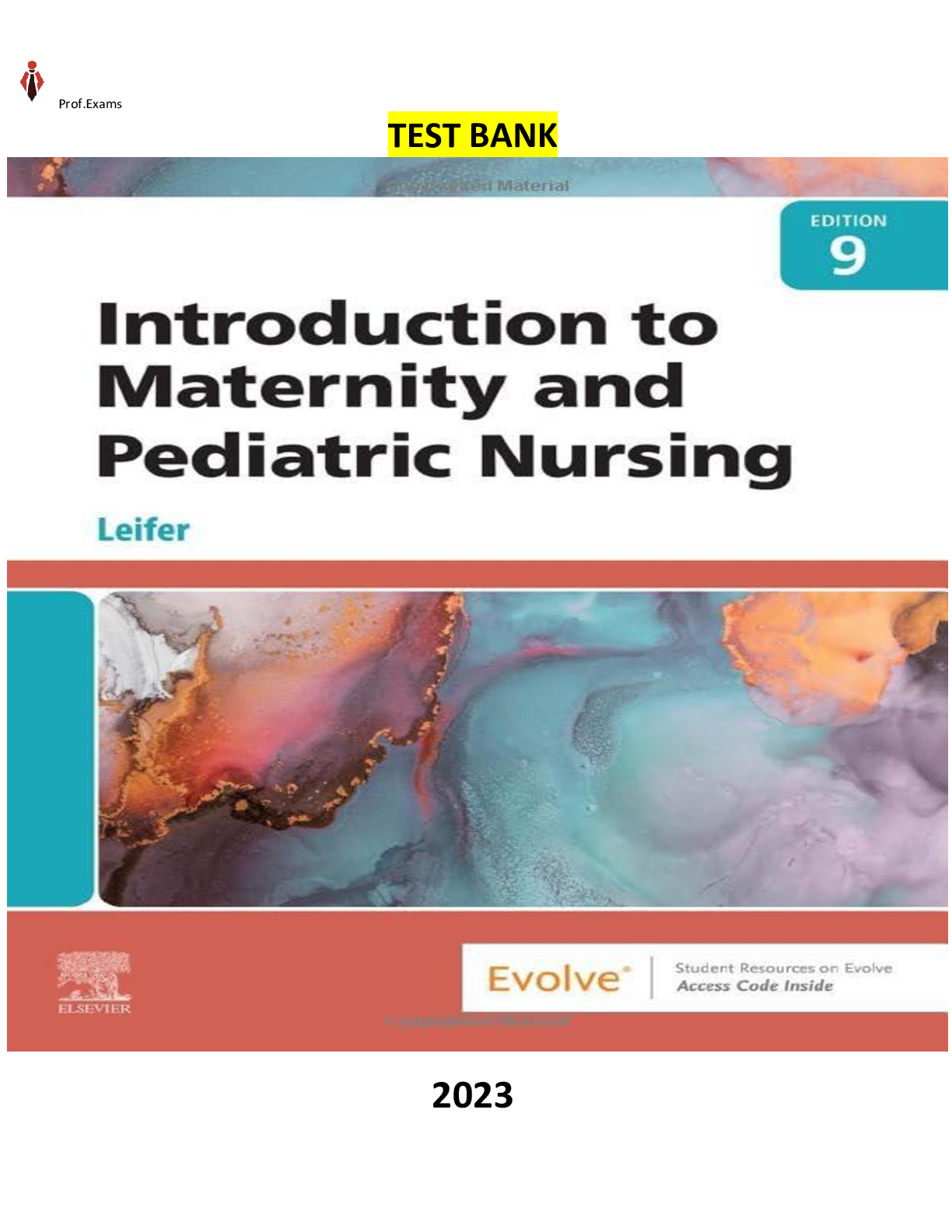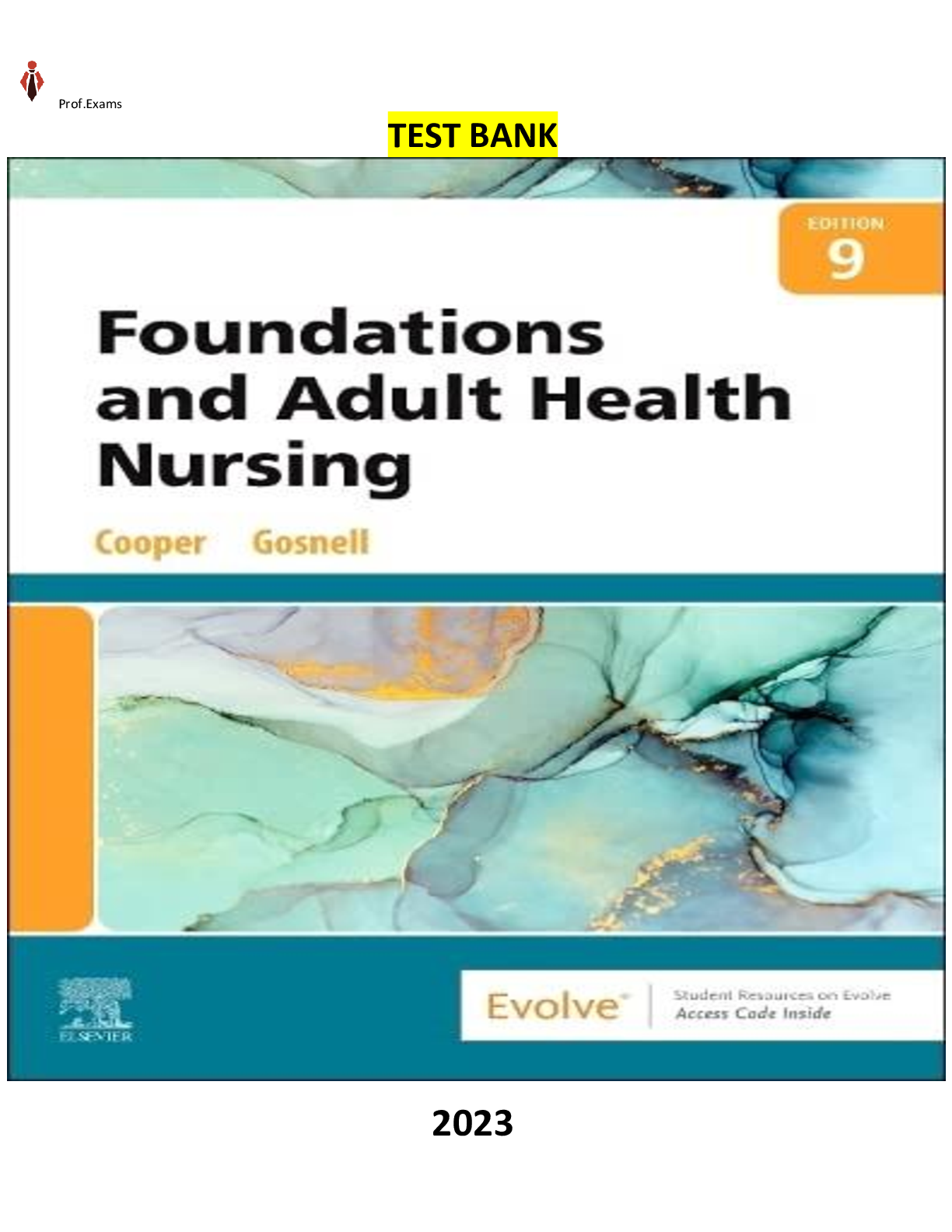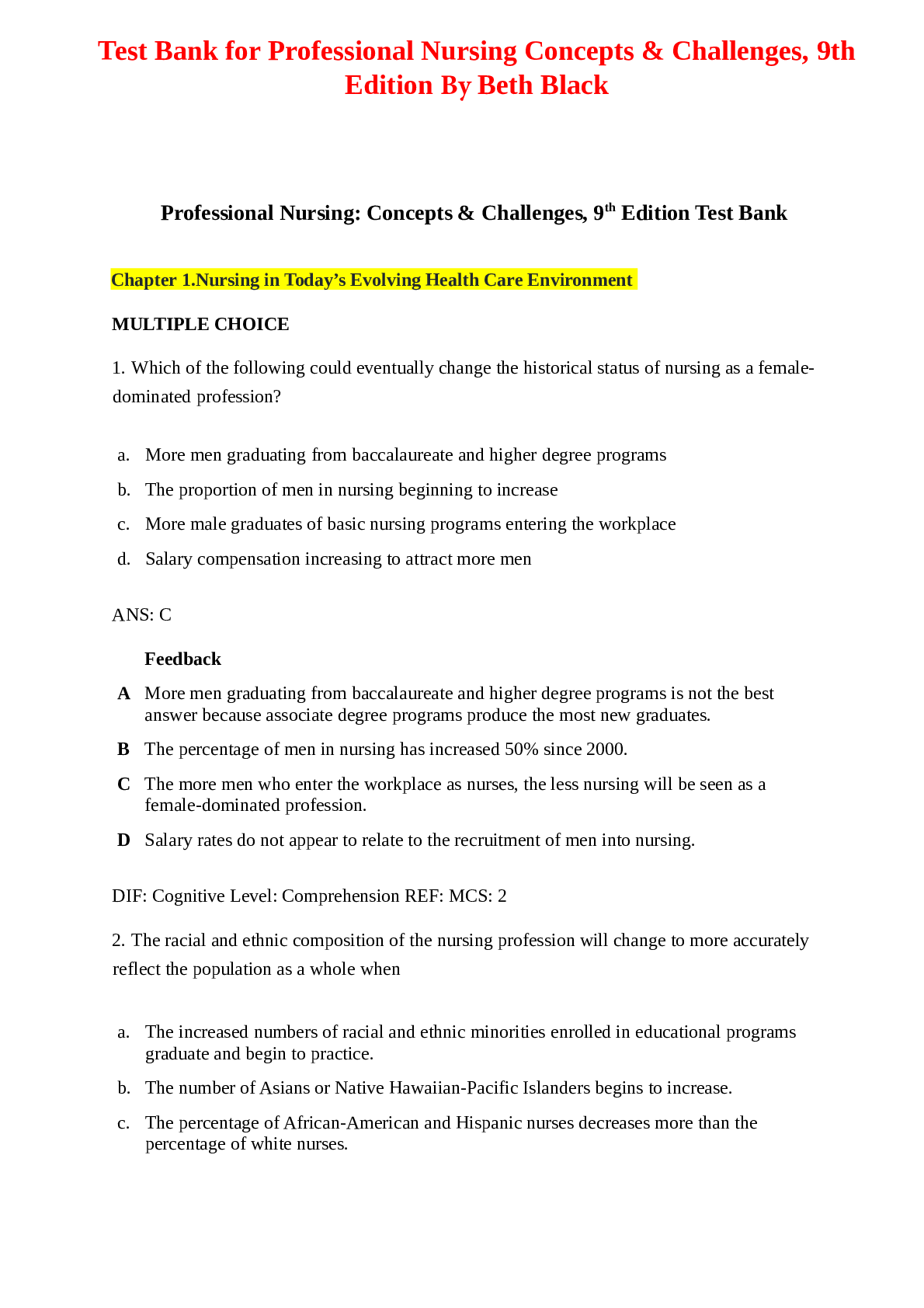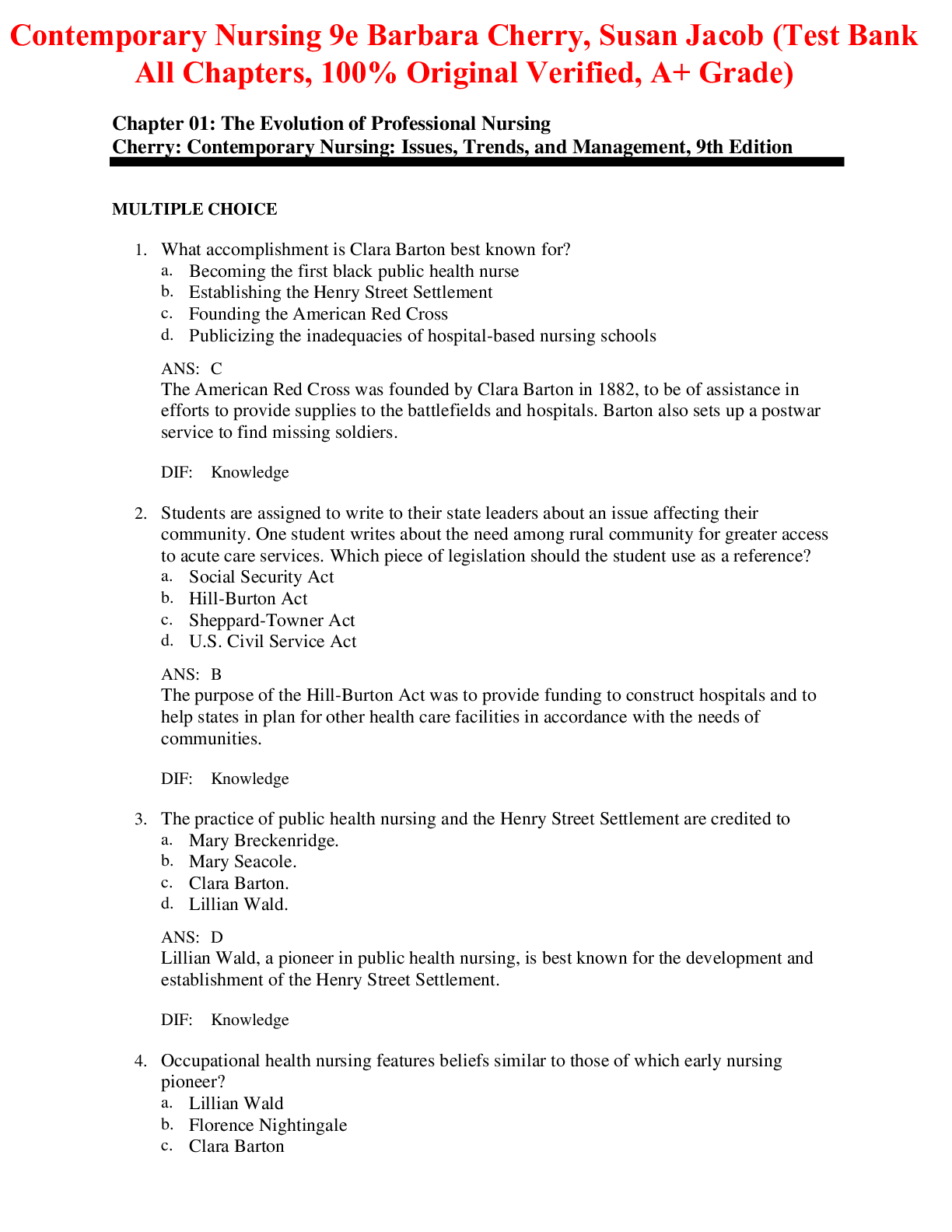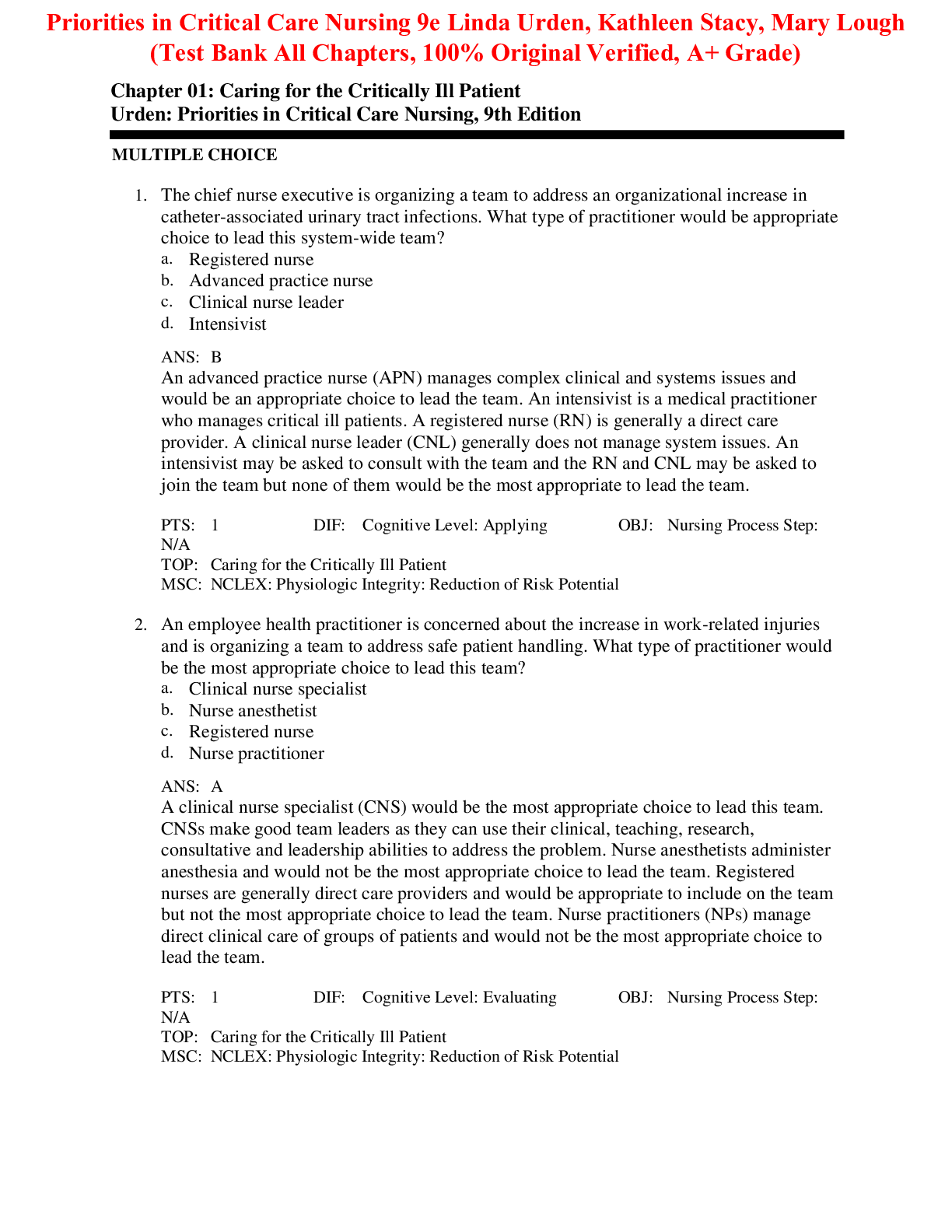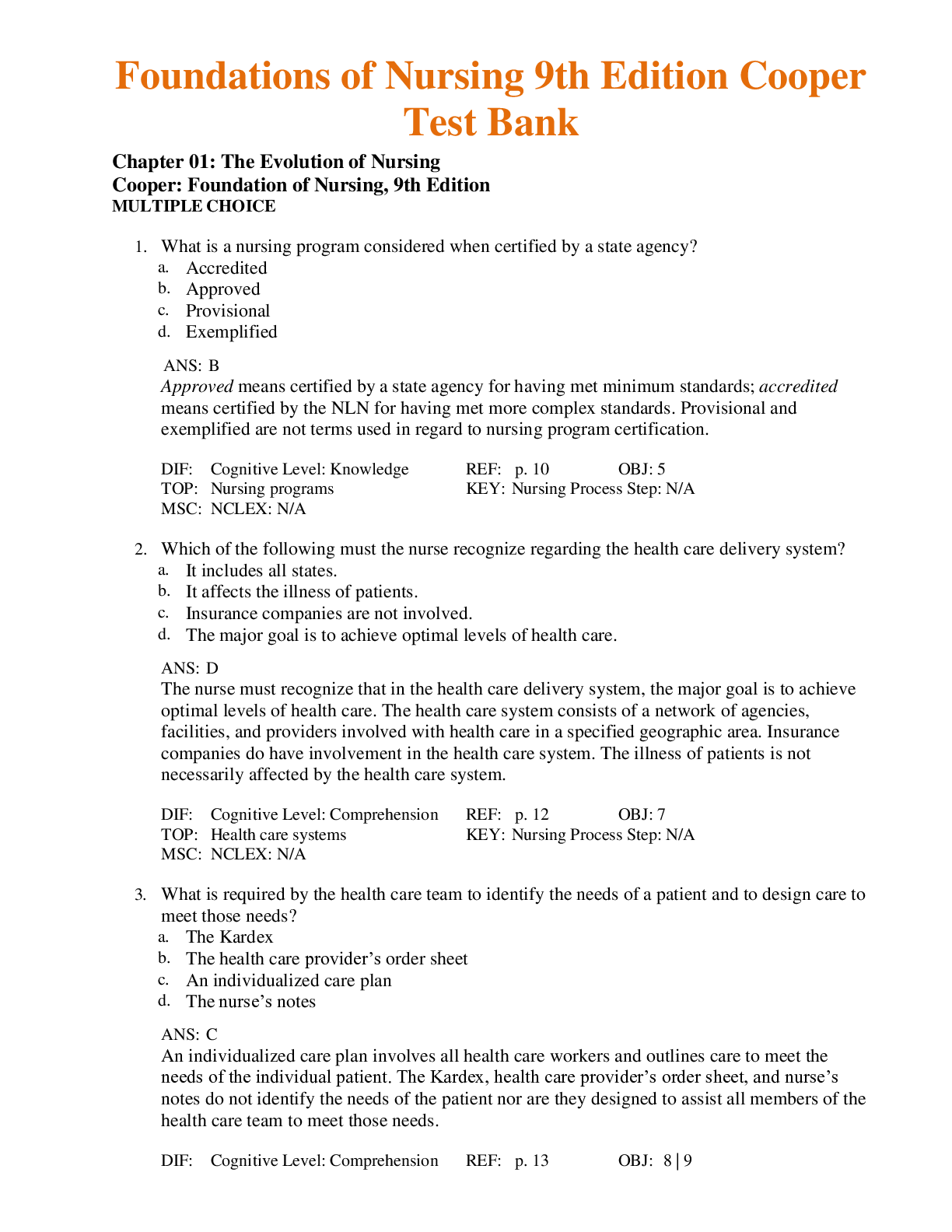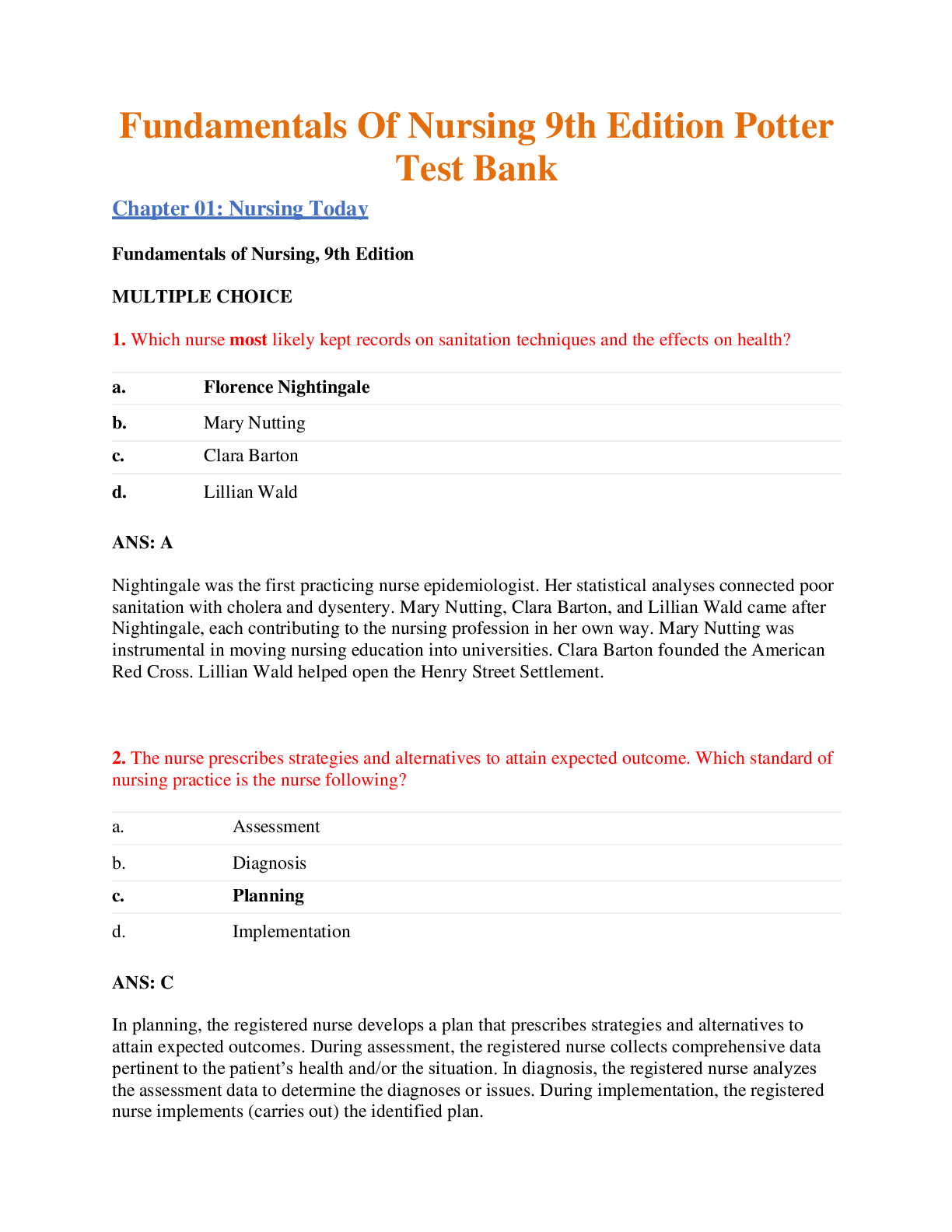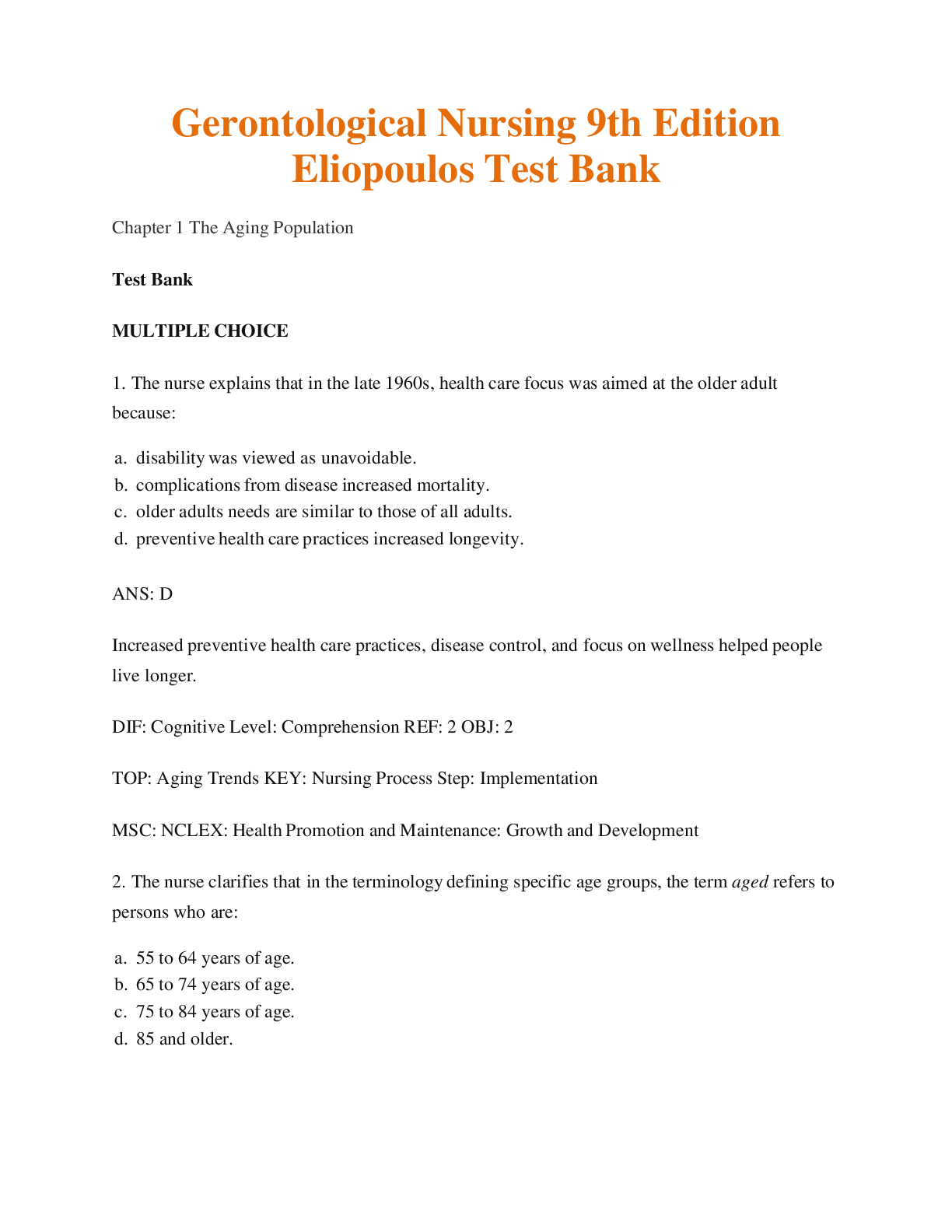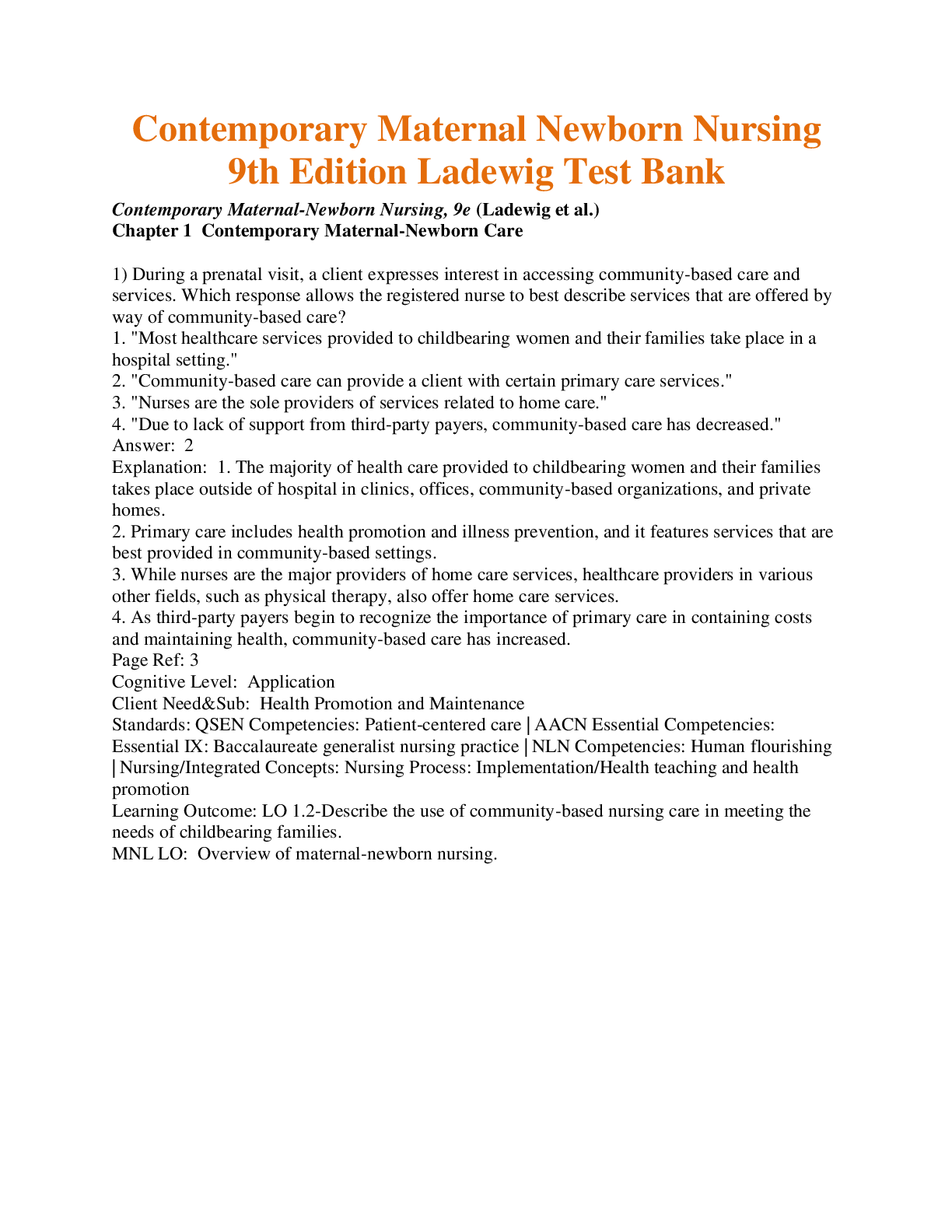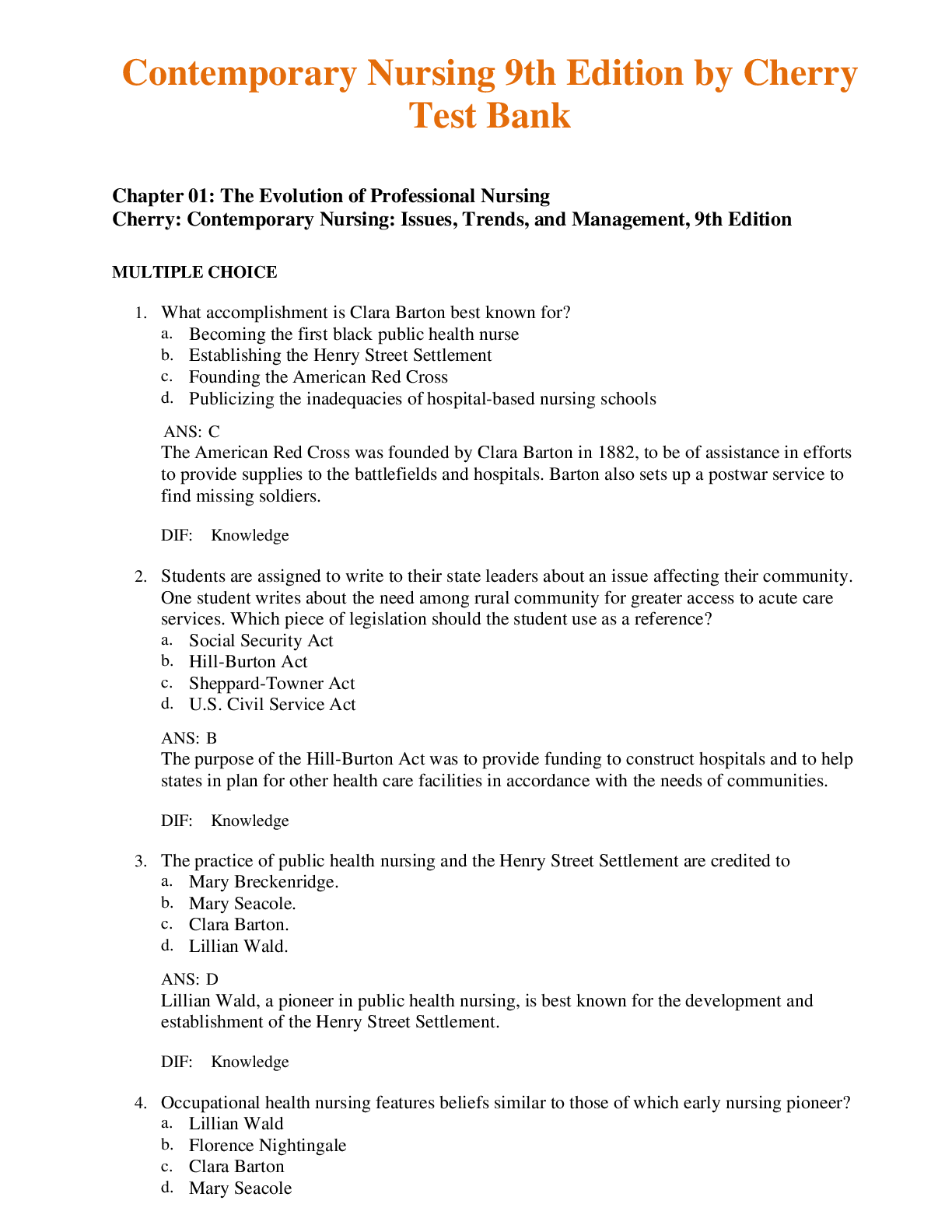*NURSING > TEST BANK > Medical Surgical Nursing 9th Edition Ignatavicius Test Bank Printed PDF (All)
Medical Surgical Nursing 9th Edition Ignatavicius Test Bank Printed PDF
Document Content and Description Below
Table of Contents Chapter 01: Overview of Professional Nursing Concepts for Medical-Surgical Nursing Chapter 02: Overview of Health Concepts for Medical-Surgical Nursing Chapter 03: Common Health P... roblems of Older Adults Chapter 04: Assessment and Care of Patients with Pain Chapter 05: Genetic Concepts for Medical-Surgical Nursing Chapter 06: Rehabilitation Concepts for Chronic and Disabling Health Problems Chapter 07: End-of-Life Care Chapter 08: Concepts of Emergency and Trauma Nursing Chapter 09: Care of Patients with Common Environmental Emergencies Chapter 10: Concepts of Emergency and Disaster Preparedness Chapter 11: Assessment and Care of Patients with Fluid and Electrolyte Imbalances Chapter 12: Assessment and Care of Patients with Acid-Base Imbalances Chapter 13: Infusion Therapy Chapter 14: Care of Preoperative Patients Chapter 15: Care of Intraoperative Patients Chapter 16: Care of Postoperative Patients Chapter 17: Inflammation and Immunity Chapter 18: Care of Patients with Arthritis and Other Connective Tissue Diseases Chapter 19: Care of Patients with HIV Disease Chapter 20: Care of Patients with Hypersensitivity (Allergy) and Autoimmunity Chapter 21: Cancer Development Chapter 22: Care of Patients with Cancer Chapter 23: Care of Patients with Infection Chapter 24: Assessment of the Skin, Hair, and Nails Chapter 25: Care of Patients with Skin Problems Chapter 26: Care of Patients with Burns Chapter 27: Assessment of the Respiratory System Chapter 28: Care of Patients Requiring Oxygen Therapy or Tracheostomy Chapter 29: Care of Patients with Noninfectious Upper Respiratory Problems Chapter 30: Care of Patients with Noninfectious Lower Respiratory Problems Chapter 31: Care of Patients with Infectious Respiratory Problems Chapter 32: Care of Critically Ill Patients with Respiratory Problems Chapter 33: Assessment of the Cardiovascular System Chapter 34: Care of Patients with Dysrhythmias Chapter 35: Care of Patients with Cardiac Problems Chapter 36: Care of Patients with Vascular Problems Chapter 37: Care of Patients with Shock Chapter 38: Care of Patients with Acute Coronary Syndromes Chapter 39: Assessment of the Hematologic System Chapter 40: Care of Patients with Hematologic Problems Chapter 41: Assessment of the Nervous System Chapter 42: Care of Patients with Problems of the CNS: The Brain Chapter 43: Care of Patients with Problems of the CNS: The Spinal Cord Chapter 44: Care of Patients with Problems of the Peripheral Nervous System Chapter 45: Care of Critically Ill Patients with Neurologic Problems Chapter 46: Assessment of the Eye and Vision Chapter 47: Care of Patients with Eye and Vision Problems Chapter 48: Assessment and Care of Patients with Ear and Hearing Problems Chapter 49: Assessment of the Musculoskeletal System Chapter 50: Care of Patients with Musculoskeletal Problems Test Bank - Medical-Surgical Nursing: Concepts for Interprofessional Collaborative Care 9e 1 Downloaded by Jamie Garvey ([email protected]) lOMoARcPSD|6672187 424 435 441 445 454 461 471 481 489 497 506 512 520 527 549 557 568 575 587 591 598 605 614 618 Chapter 51: Care of Patients with Musculoskeletal Trauma Chapter 52: Assessment of the Gastrointestinal System Chapter 53: Care of Patients with Oral Cavity Problems Chapter 54: Care of Patients with Esophageal Problems Chapter 55: Care of Patients with Stomach Disorders Chapter 56: Care of Patients with Noninflammatory Intestinal Disorders Chapter 57: Care of Patients with Inflammatory Intestinal Disorders Chapter 58: Care of Patients with Liver Problems Chapter 59: Care of Patients with Problems of the Biliary System and Pancreas Chapter 60: Care of Patients with Malnutrition: Undernutrition and Obesity Chapter 61: Assessment of the Endocrine System Chapter 62: Care of Patients with Pituitary and Adrenal Gland Problems Chapter 63: Care of Patients with Problems of the Thyroid and Parathyroid Glands Chapter 64: Care of Patients with Diabetes Mellitus Chapter 65: Assessment of the Renal/Urinary System Chapter 66: Care of Patients with Urinary Problems Chapter 67: Care of Patients with Kidney Disorders Chapter 68: Care of Patients with Acute Kidney Injury and Chronic Kidney Disease Chapter 69: Assessment of the Reproductive System Chapter 70: Care of Patients with Breast Disorders Chapter 71: Care of Patients with Gynecologic Problems Chapter 72: Care of Patients with Male Reproductive Problems Chapter 73: Care of Transgender Patients Chapter 74: Care of Patients with Sexually Transmitted Diseases Test Bank - Medical-Surgical Nursing: Concepts for Interprofessional Collaborative Care 9e 2 Downloaded by Jamie Garvey ([email protected]) lOMoARcPSD|6672187 Chapter 01: Overview of Professional Nursing Concepts for MedicalSurgical Nursing MULTIPLE CHOICE 1. A nurse wishes to provide client-centered care in all interactions. Which action by the nurse best demonstrates this concept? a. Assesses for cultural influences affecting health care b. Ensures that all the clients basic needs are met c. Tells the client and family about all upcoming tests d. Thoroughly orients the client and family to the room ANS: A Competency in client-focused care is demonstrated when the nurse focuses on communication, culture, respect, compassion, client education, and empowerment. By assessing the effect of the clients culture on health care, this nurse is practicing client-focused care. Providing for basic needs does not demonstrate this competence. Simply telling the client about all upcoming tests is not providing empowering education. Orienting the client and family to the room is an important safety measure, but not directly related to demonstrating client-centered care. DIF: Understanding/Comprehension REF: 3 KEY: Patient-centered care| culture MSC: Integrated Process: Caring NOT: Client Needs Category: Psychosocial Integrity 2. A nurse is caring for a postoperative client on the surgical unit. The clients blood pressure was 142/76 mm Hg 30 minutes ago, and now is 88/50 mm Hg. What action by the nurse is best? a. Call the Rapid Response Team. b. Document and continue to monitor. c. Notify the primary care provider. d. Repeat blood pressure measurement in 15 minutes. ANS: A The purpose of the Rapid Response Team (RRT) is to intervene when clients are deteriorating before they suffer either respiratory or cardiac arrest. Since the client has manifested a significant change, the nurse should call the RRT. Changes in blood pressure, mental status, heart rate, and pain are particularly significant. Documentation is vital, but the nurse must do more than document. The primary care provider should be notified, but this is not the priority over calling the RRT. The clients blood pressure should be reassessed frequently, but the priority is getting the rapid care to the client. DIF: Applying/Application REF: 3 KEY: Rapid Response Team (RRT)| medical emergencies MSC: Integrated Process: Communication and Documentation NOT: Client Needs Category: Physiological Integrity: Physiological Adaptation 3. A nurse is orienting a new client and family to the inpatient unit [Show More]
Last updated: 11 months ago
Preview 1 out of 625 pages

Reviews( 2 )

by [email protected] · 1 year ago
Thank you for your review! All the best in your studies. by Nutmegs. 1 year ago

by Nutmegs · 1 year ago
Document information
Connected school, study & course
About the document
Uploaded On
Oct 21, 2021
Number of pages
625
Written in
Additional information
This document has been written for:
Uploaded
Oct 21, 2021
Downloads
1
Views
231


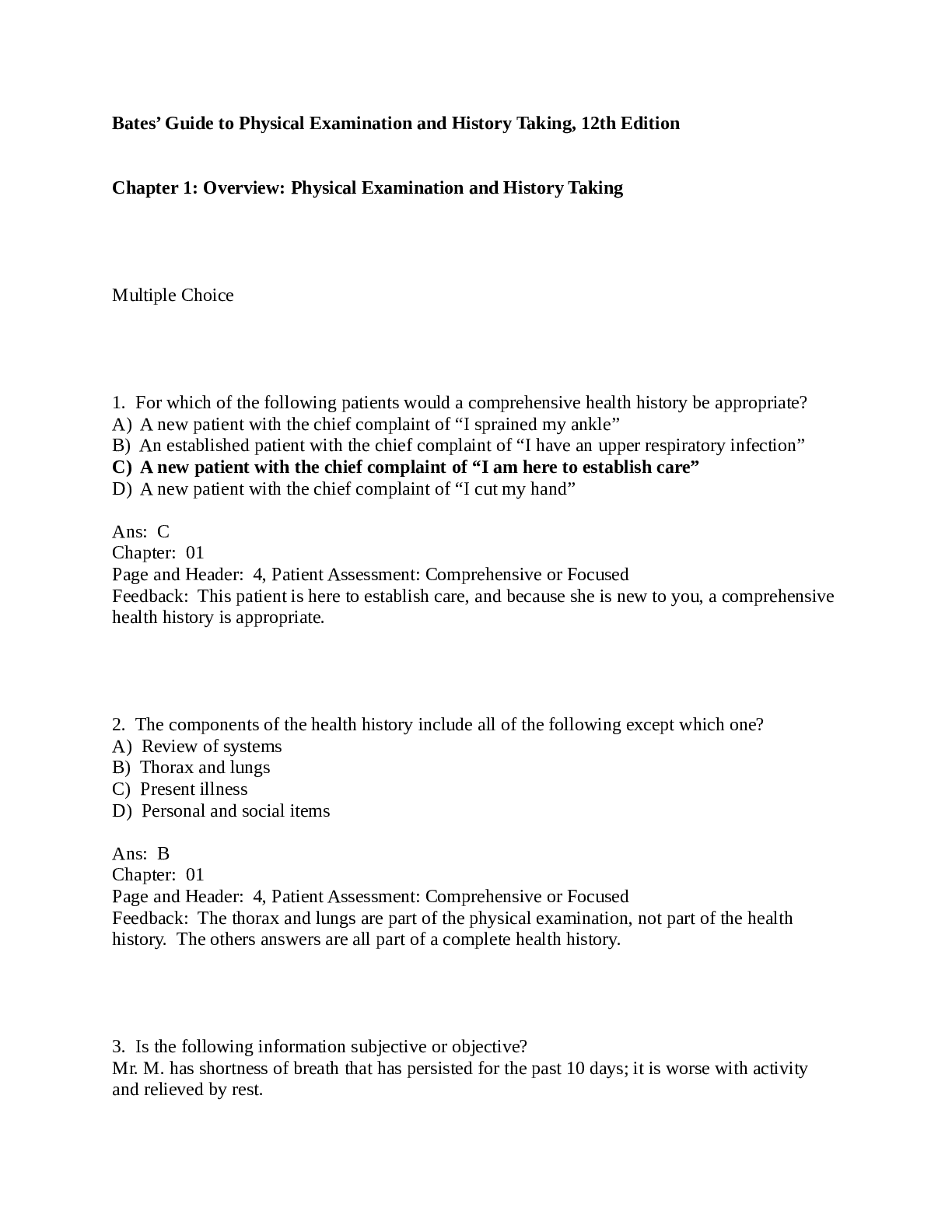
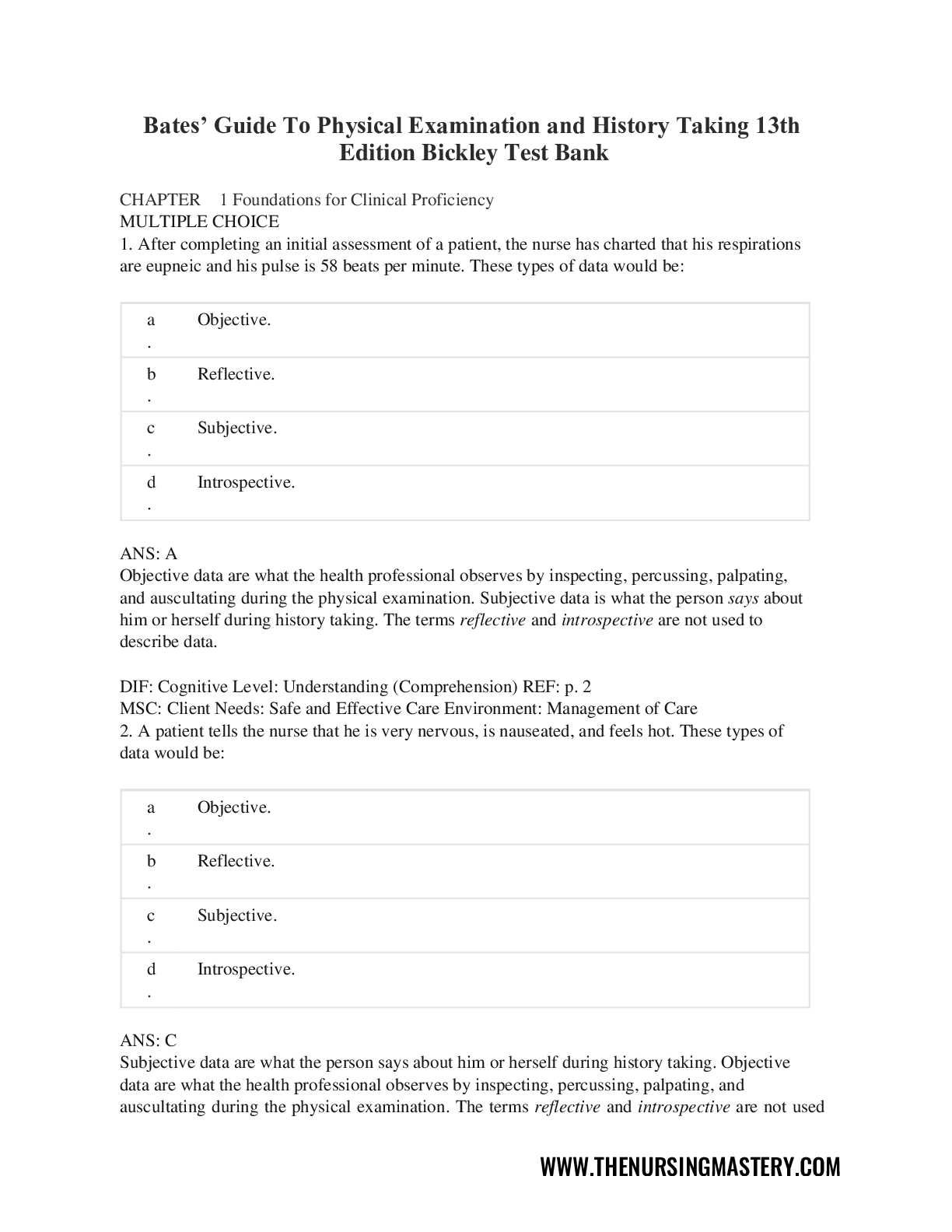
.png)
.png)
.png)

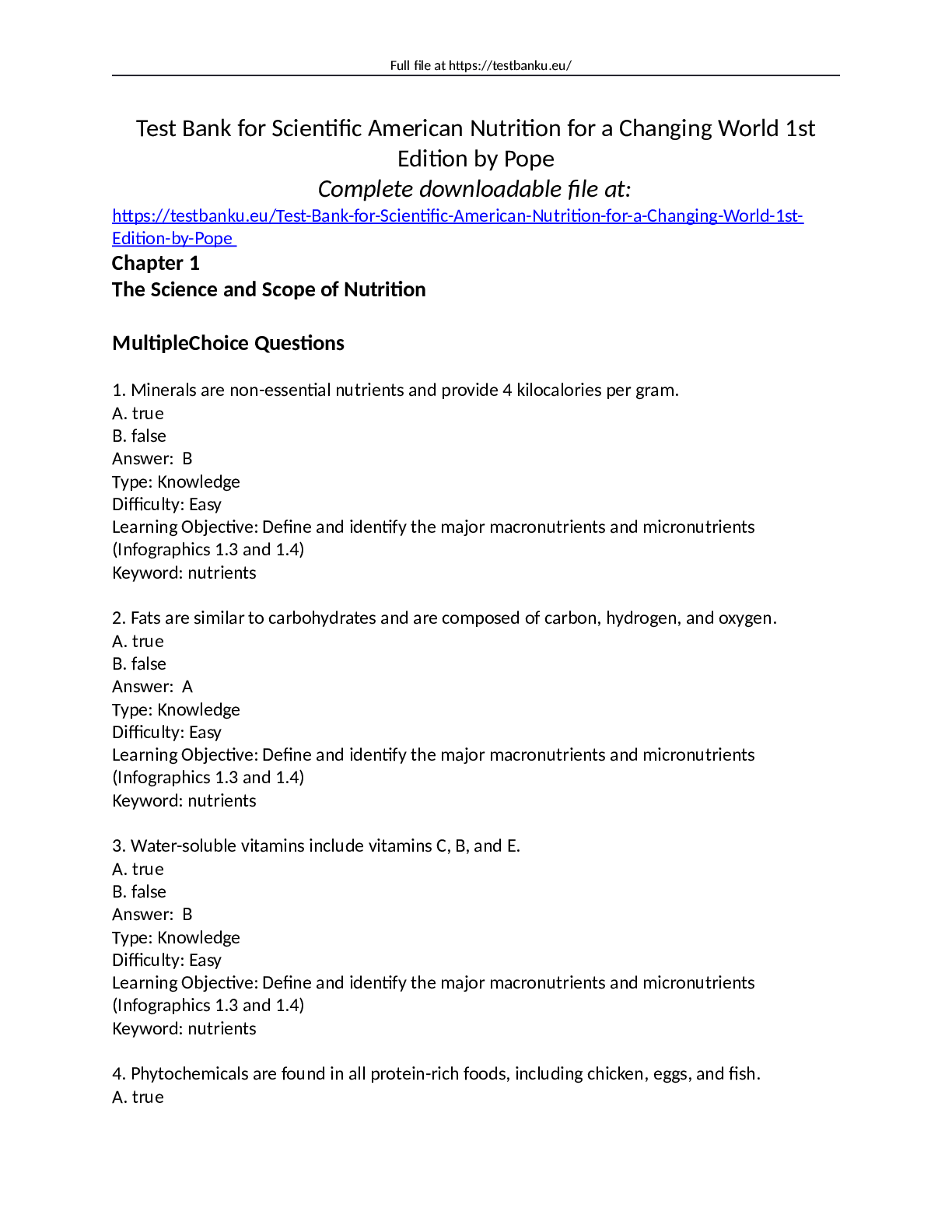
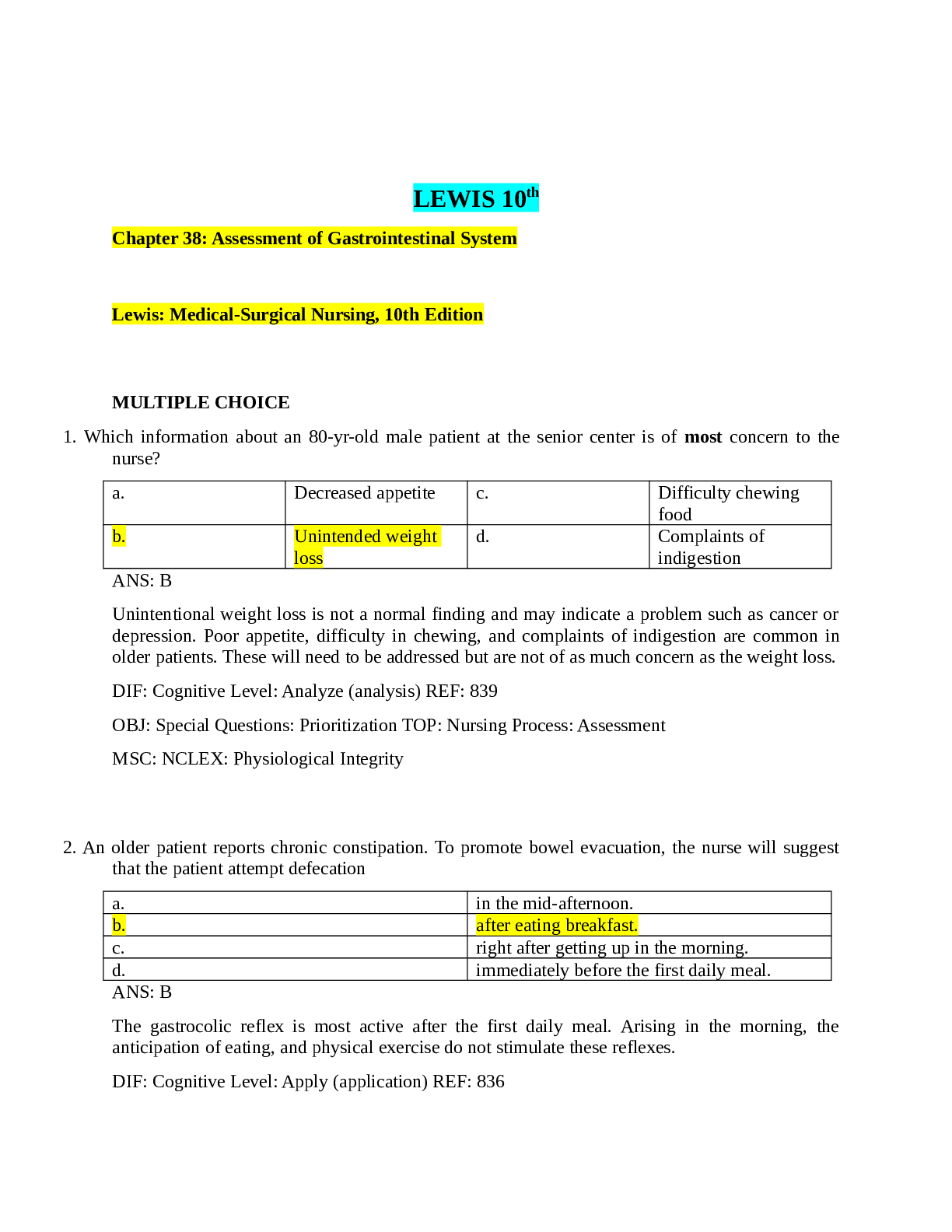

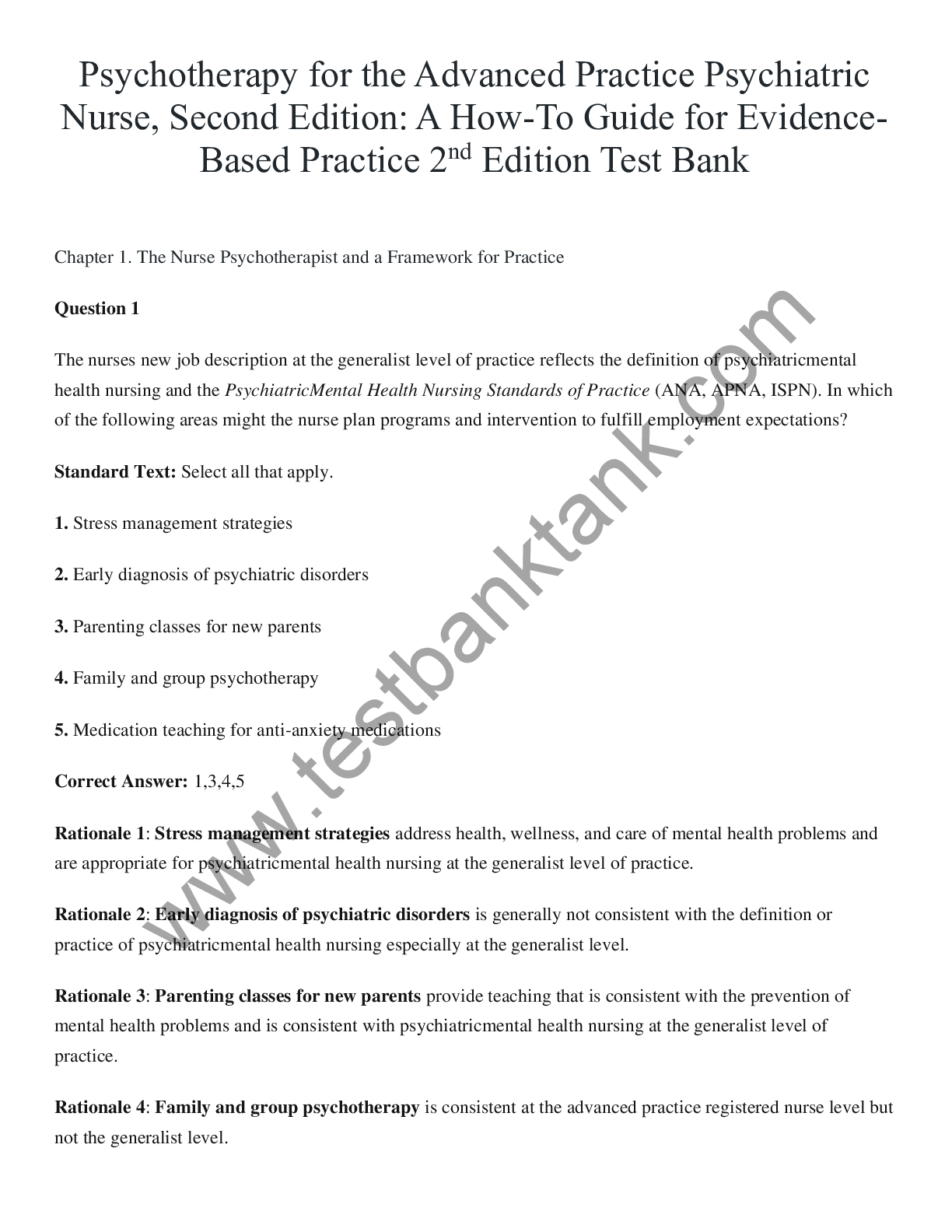
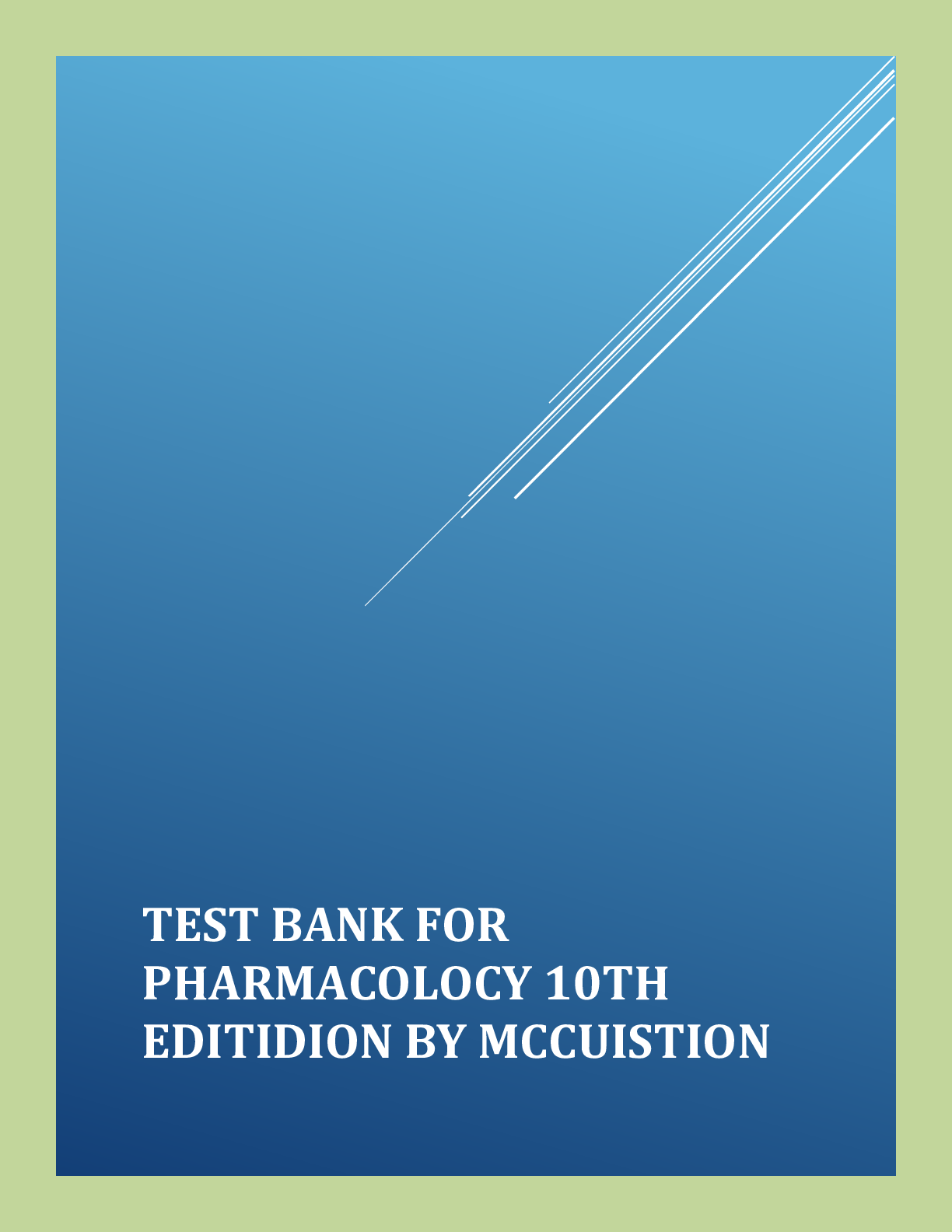
.png)

